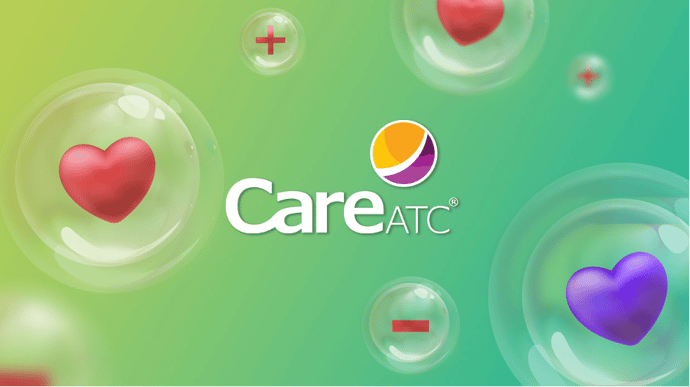 If your New Year’s resolutions are beginning to fade as January turns to February, do not despair. We have some simple, plant-centered, nutrition hacks that will help you stay on your plan to eat healthy and nourish your heart - without breaking the bank!
If your New Year’s resolutions are beginning to fade as January turns to February, do not despair. We have some simple, plant-centered, nutrition hacks that will help you stay on your plan to eat healthy and nourish your heart - without breaking the bank!
1) Arm with Antioxidants
When you are looking to boost heart health, start at home. Reach for those brightly colored fruits on your kitchen counter, the vibrant vegetables in your refrigerator, that dark chocolate you have stashed away in your cabinet, the turmeric in your spice drawer or that soothing green tea in your pantry. You might notice that a common denominator in all these foods are their unmistakable, brilliant colors, marking the presence of substances called antioxidants with substantial disease fighting potential.
The war within: Our bodies are constantly bombarded with substances called free radicals, which can lead to oxidative stress and inflammation, the basis of all chronic disease. Antioxidants from plants are like the marines, always standing at bay, ready to fight off the little villains called free radicals. The goal is to build a strong arsenal of antioxidants from brightly colored fruits and veggies to combat free radicals and prevent disease. Simple, and oh so powerful!!
2) The Fibrous Facts
Fiber could be described as the incredible and edible part of the plant food that you cannot digest. Ironically, it is just as important as the part that you can! This is because soluble fiber in foods forms a gel when it dissolves in digestive fluids, and then adheres to cholesterol and toxins, carrying them out of your body for good. A natural detoxifier, fiber acts like a sponge, mopping up that nasty, artery clogging cholesterol that can lead to heart disease.
3) The Scoop on Fat
Not all fats are created equal. Emphasize healthy, plant-based fats from whole plant foods. Use an avocado spread instead of mayonnaise in that sandwich, and the next time you get that all too familiar snack attack at 3 pm, reach for a handful of crunchy, unsalted almonds with heart healthy, monounsaturated fats instead of the highly processed pretzels. So also, the fat in fish have omega-3 fatty acids that are known to reduce inflammation associated with chronic disease including your heart.
4) Fast, White, and Processed.
While the media has a tendency to demonize certain nutrients and idolize others, when it comes to fast, white and processed carbs, (think bagels, pretzels, white rice, white pasta, rolls, the list goes on),.. less is indeed more! In these foods, the original whole grain has been processed to the point where all the vital nutrients are lost along with the all-important fiber. The resulting refined food is all but the pale shadow of the healthful whole grains our ancient ancestors used to consume. The body breaks down these carbs rapidly to sugar, causing a sugar spike, release of insulin, a hormone that overzealously prompts fat storage, weight gain, and the rest is history.
5) Delicious Protection
Dark chocolate, of course! With valentine’s day around the corner, if you have had visons of bon bons dancing in your head, you can rejoice. We now know that dark chocolate (with minimally 70% cocoa) has powerful antioxidants called flavanols that have substantial heart healthy benefits. Emerging evidence shows that dark chocolate has favorable effects on blood pressure, cholesterol and can reduce clots forming in your arteries that can lead to a heart attack or stroke. Furthermore, it has the highest flavanol content among commonly consumed foods with flavanols-even higher than red wine! A word of caution: milk chocolate has a much lower flavanol content and comes packaged with artery clogging saturated fat that we want to avoid.
Heart-healthy truth: Following sound nutritional guidance does not have to be complicated. The foods noted here are most likely foods you already have in your kitchen cabinet. We hope you take these tips to heart, dig in and eat to your heart’s content!
|
Make your next visit to the clinic a hassle-free experience by making an appointment with us online. |
References
References for Heart Healthy article:
- Arulselvan, P., Fard, M. T., Tan, W. S., Gothai, S., Fakurazi, S., Norhaizan, M. E., & Kumar, S. S. (2016). Role of Antioxidants and Natural Products in Inflammation. Oxidative medicine and cellular longevity, 2016, 5276130. https://doi.org/10.1155/2016/5276130 Bordeaux, B., Yanek, L. R., Moy, T. F., White, L. W., Becker, L. C., Faraday, N., & Becker, D. M. (2007). Casual Chocolate Consumption and Inhibition of Platelet Function. Preventive Cardiology, 10(4), 175-180. doi:10.1111/j.1520-037x.2007.06693.x
- Carlsen, M. H., Halvorsen, B. L., Holte, K., Bøhn, S. K., Dragland, S., Sampson, L., Willey, C., Senoo, H., Umezono, Y., Sanada, C., Barikmo, I., Berhe, N., Willett, W. C., Phillips, K. M., Jacobs, D. R., Jr, & Blomhoff, R. (2010). The total antioxidant content of more than 3100 foods, beverages, spices, herbs and supplements used worldwide. Nutrition journal, 9, 3. https://doi.org/10.1186/1475-2891-9-3
- Corti, R., Flammer, A. J., Hollenberg, N. K., & Lüscher, T. F. (2009). Cocoa and Cardiovascular Health. Circulation, 119(10), 1433-1441. doi:10.1161/circulationaha.108.827022 Dirk Taubert, M. (2007, April 09). Effect of Cocoa and Tea Intake on Blood Pressure. Retrieved from https://jamanetwork.com/journals/jamainternalmedicine/article-abstract/412211
- Djoussé, L., Hopkins, P. N., North, K. E., Pankow, J. S., Arnett, D. K., & Ellison, R. C. (2011). Chocolate consumption is inversely associated with prevalent coronary heart disease: the National Heart, Lung, and Blood Institute Family Heart Study. Clinical nutrition (Edinburgh, Scotland), 30(2), 182–187. https://doi.org/10.1016/j.clnu.2010.08.005
- Engler, M. B., Engler, M. M., Chen, C. Y., Malloy, M. J., Browne, A., Chiu, E. Y., Kwak, H. K., Milbury, P., Paul, S. M., Blumberg, J., & Mietus-Snyder, M. L. (2004). Flavonoid-rich dark chocolate improves endothelial function and increases plasma epicatechin concentrations in healthy adults. Journal of the American College of Nutrition, 23(3), 197–204. https://doi.org/10.1080/07315724.2004.10719361
- Grassi, Davide, et al. “Blood Pressure Is Reduced and Insulin Sensitivity Increased in Glucose-Intolerant, Hypertensive Subjects after 15 Days of Consuming High-Polyphenol Dark Chocolate.” The Journal of Nutrition, vol. 138, no. 9, 2008, pp. 1671–1676., doi:10.1093/jn/138.9.1671.
- Jonnalagadda, S. S., Harnack, L., Liu, R. H., McKeown, N., Seal, C., Liu, S., & Fahey, G. C. (2011). Putting the whole grain puzzle together: health benefits associated with whole grains--summary of American Society for Nutrition 2010 Satellite Symposium. The Journal of nutrition, 141(5), 1011S–22S. https://doi.org/10.3945/jn.110.132944
- Katz, D. L., Doughty, K., & Ali, A. (2011). Cocoa and chocolate in human health and disease. Antioxidants & redox signaling, 15(10), 2779–2811. https://doi.org/10.1089/ars.2010.3697
- Lee, K. W., Kim, Y. J., Lee, H. J., & Lee, C. Y. (2003). Cocoa has more phenolic phytochemicals and a higher antioxidant capacity than teas and red wine. Journal of agricultural and food chemistry, 51(25), 7292–7295. https://doi.org/10.1021/jf0344385
- Magrone, T., Russo, M. A., & Jirillo, E. (2017). Cocoa and Dark Chocolate Polyphenols: From Biology to Clinical Applications. Frontiers in immunology, 8, 677. https://doi.org/10.3389/fimmu.2017.00677
- Moreno, D.A., et al. “Chemical and Biological Characterization of Nutraceutical Compounds of Broccoli.” Journal of Pharmaceutical and Biomedical Analysis, Elsevier, 19 May 2006, www.sciencedirect.com/science/article/abs/pii/S0731708506003116?via=ihub.
- Okarter, N., & Liu, R. H. (2010). Health benefits of whole grain phytochemicals. Critical reviews in food science and nutrition, 50(3), 193–208. https://doi.org/10.1080/10408390802248734
- Steinberg, F. M., Bearden, M. M., & Keen, C. L. (2003). Cocoa and chocolate flavonoids: implications for cardiovascular health. Journal of the American Dietetic Association, 103(2), 215–223. https://doi.org/10.1053/jada.2003.50028
- Taubert, D., Roesen, R., Lehmann, C., Jung, N., & Schömig, E. (2007). Effects of low habitual cocoa intake on blood pressure and bioactive nitric oxide: a randomized controlled trial. JAMA, 298(1), 49–60. https://doi.org/10.1001/jama.298.1.4
- Vannice, G., & Rasmussen, H. (2014). Position of the Academy of Nutrition and Dietetics: Dietary Fatty Acids for Healthy Adults. Journal of the Academy of Nutrition and Dietetics, 114(1), 136-153. doi:10.1016/j.jand.2013.11.001
- Wan, Y., Vinson, J. A., Etherton, T. D., Proch, J., Lazarus, S. A., & Kris-Etherton, P. M. (2001). Effects of cocoa powder and dark chocolate on LDL oxidative susceptibility and prostaglandin concentrations in humans. The American journal of clinical nutrition, 74(5), 596–602. https://doi.org/10.1093/ajcn/74.5.596

 Posted by
Posted by

